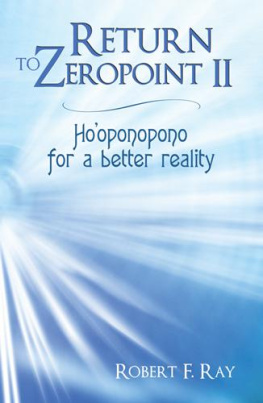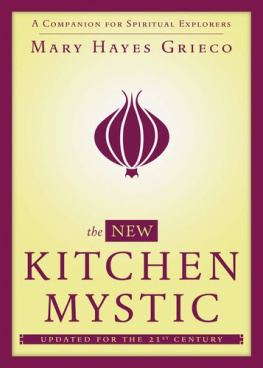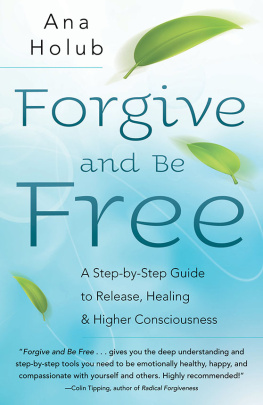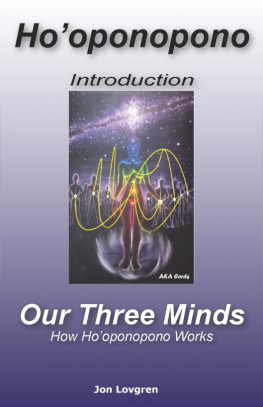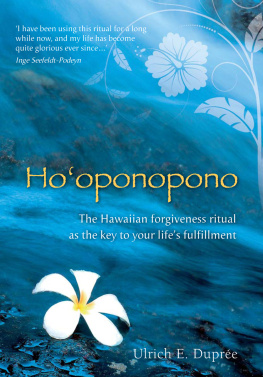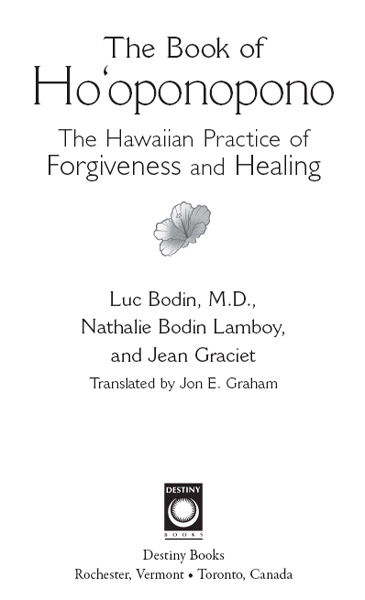
The Book of
Hooponopono

Hooponopono is an important practice of compassion, forgiveness, and gratitude, both for our relationships and for ourselves. Drawing on its rich history, Bodin, Lamboy, and Graciet explorewith depth and insightthe many layers of this powerful tool for mediation and healing. Their book gives us a compelling approach to cultivating this practice in our everyday lives.
BAIRD HERSEY, MUSICIAN AND AUTHOR OF THE PRACTICE OF NADA YOGA
Nowhere has the Hawaiian healing practice of Hooponopono been explored as extensively as within this book. The authors give us a thorough guide to humble our way of life to accord with the way things truly are, through the life practice of forgiveness that ultimately leads to the peace and love we all deeply yearn for. Drawing not only from this ancient Hawaiian tradition but also from modern science, this book gives us the tools to live a more authentic life through facing our accumulated karma that obstructs our innate freedom.
JASON GREGORY, AUTHOR OF ENLIGHTENMENT NOW AND THE SCIENCE AND PRACTICE OF HUMILITY
Blessed are the ones who free future generations of irrational fear. The inherent power of forgiveness can mean our very survival. The Book of Hooponopono tells you how to be free of the ropes of fear and grief and attachment to old and unworkable ways. In this book, learn and marvel at the impact on relationships and mental health by saying to yourself, Im sorry, forgive me, thank you, I love you. The authors, each in their own specialties, ground the mystical with science and guide the reader in the gentle Hawaiian way of soft breezes and blue surf to increasingly take charge of the past, past lives, and even unknown issuesto be free of memories and beliefs that can be like storm clouds hiding us from our true island self.
GARNETTE ARLEDGE, COAUTHOR OF WISE SECRETS OF ALOHA: LEARN AND LIVE THE SACRED ART OF LOMILOMI
Foreword

W hen my friend Luc asked me to write the foreword for this book, that very evening I pulled a book at random from the shelf of my home library and opened it absentmindedly. Inside I found a piece of paper folded in half on which I had written these sentences:
In my opinion, there must be something behind all this... a completely simple notion. And this notion for me, when we finally discover it, will be so irresistible and fine that we will say to ourselves, Oh, how could it have been anything else! (John Wheeler, physicist, quote from a 1985 television documentary, The Creation of the Universe)
The silence whispered to me that these sentences were a wink of the eye from life to remind me of what is essential.
This is the way truths make their way to us. Always simple, they do not offer explanations and need no long speeches.
This is how Hooponopono came into my life. My heart recognized something it already knew, because our hearts are designed to recognize the truth.
The problem is that we have a kind of veil that prevents us from seeing and expressing our true nature. In Hooponopono this veil is made of memories. In order to clarify and dissolve them, we all have one simple thing we must do: cleanse, cleanse, cleanse.
Over time I realized that this cleansing takes place in three stages. First, we must open our hearts; then, we welcome what is with love. Finally, we have to learn to let go of the veil, stop clinging, and trust in the God we all carry within ourselves.
In this book my friends Nathalie Bodin Lamboy and Luc Bodin, and my husband, Jean, share their experience and knowledge of Hooponopono, thereby giving you the opportunity to advance your understanding of this way of being in the world.
Through practice you will be able to discover and integrate the path that is most appropriate for you, the one that speaks to you from your heart.
Open your heart and remember: It is only with the heart that one can see clearly; what is essential is invisible to the eye (Antoine de Saint-Exupry, The Little Prince).
I am grateful for the opportunity life has given me to clear this veil that keeps me in the illusion of separation.
I speak to the unique being that I am, to Mother Earth, and to you, the reader, knowing that my first mistake is in believing I am separate from the All and imperfect. I ask my soul, or my higher self, to help me release all the memories that make me believe this.
Im sorry, forgive me, thank you, I love you.
MARIE-ELISA HURTADO-GRACIET
Marie-Elisa Hurtado-Graciet gives lectures and workshops on Hooponopono and EFT (Emotional Freedom Technique) in France and abroad. She is also an NLP (Neuro-Linguistic Programming) practitioner and the author of several books, including Hooponopono: Le secret des gurisseurs hawaens.
Operating Instructions for Hooponopono

The Hooponopono phrase:
Im sorry, forgive me, thank you, I love you.
What do these words mean?
Im sorry is acknowledgment that I created whatever pain Ive caused or errors Ive made.
Forgive me, because I did not know I had that inside me.
Thank you for allowing me to release and cleanse this memory.
I love you, my inner divinity, meaning, I love me.
When should this phrase be said?
When you are confronted by a conflict, a violent reaction, an accident, a traumatic event, anything that causes a strong, negative emotion to surge up within you.
How should it be said?
You can say it out loud or quietly to yourself.
To whom are you speaking when you say this phrase?
To yourself, your inner divinity, your protectors, the universe, God.
Can this phrase be used preventively?
You can say, Im sorry, forgive me, thank you, I love you, even when you are not experiencing any actual conflict. This allows you to erase any memories that have emerged without your knowledge. Some people recite this phrase as a mantra when they are taking a walk, hiking, or riding a bike.
Can you say this phrase during a happy event?
Yes, you have at your disposal a tool that allows you to put your ego to bed and fully experience joy, in complete humility.
Can you do Hooponopono while watching television?
You can perform Hooponopono in the context of anything that inspires negative emotion, including television, the Internet, telephone, or listening to the radio.
Must you say every word of the phrase?
When you begin practicing Hooponopono, take the time to speak the full phrase until you have fully integrated the sensation of each word. After this, Thank you, I love you is enough.
What happens after you say it?
A sense of calm is established. You have no expectations about what is happening because the essential benefit of Hooponopono is that you achieve inner peace.
From the Origins of the Practice to Today
Jean Graciet

B eginning the Hooponopono process is relatively simple, when all is said and done. If something is bothering you, either a small daily annoyance or some much more serious event, all you need to do is repeat its four short phrases, which, in fact, are only a few words. These phrases are: Im sorry, forgive me, thank you, I love you. When these phrases are repeated several times over a certain interval, something happenssometimes even a miracle takes place. Indeed, nothing could seem simpler, and it appears to be in the reach of everyone. But what we are going to see now is that it is not as simple as it looks to practice Hooponopono and integrate it into your life.
Next page

